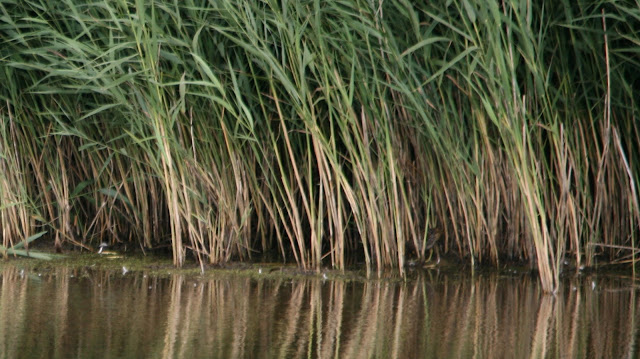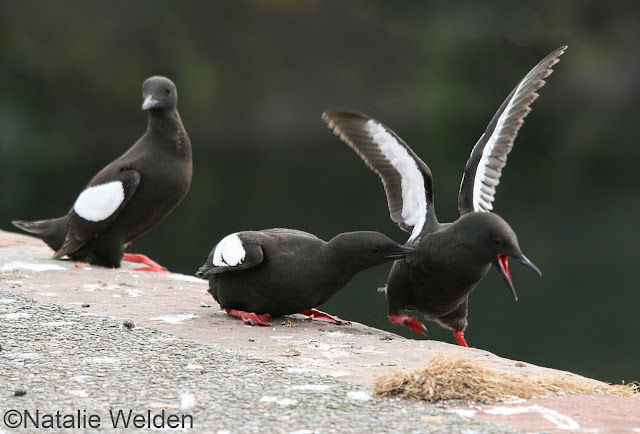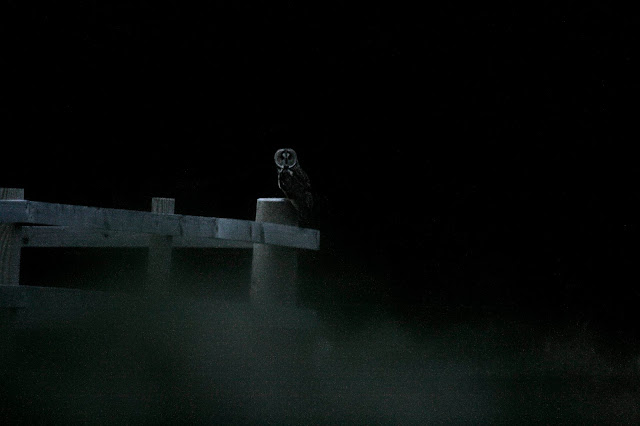This weekend fellow blonde birder, Tom, and I decided on a day in Norfolk to mop up some winter migrants. The reports had been coming in all week and we were even more sure than normal that the working year couldn't end soon enough. The plan was to hit as many sites as we could, before dark, then Welney for tea and floodlit swans.
We were into the car at the god-awful time of 5 am and arrived at Holme at 7:30 (where there had been reports of shore lark the previous day). As we worked our way out along the spit there wasn't a thing moving, we were the only things daft enough to be out at that hour. The wind was battering through but the light was good. As we made it to the end of the point - at about 8:15 - a few bits and bobs were starting to move. Then, disaster. Three shapes lifted ahead of us and made of in the direction of the marsh. Three lark-like shapes.
We settled in for a long wait on the leeward side of the sand dunes; ducking low out of the wind. But thankfully, suddenly, they returned; calling as they passed over head, before settling back in the same scrub as they had appeared from, and proceeded to pick through the dead vegetation. Once fully awake they were more tolerant of people, allowing passing dog walkers within 50 meters and letting me get a few snaps.
 |
| Shore lark trio |
From there we went to Choseley, ticking of the lingering rough-legged buzzards, then on to Titchwell in search of water pipit. We picked up the birds but, after leaving, found out that the bloody red-rumped swallow had been at the other end of the reserve while we were there. After Titchwell we headed over to Cley for a rattle round before dark, grabbing snow bunting, but with no sign of the phalarope that had been seen again in the morning. The light dropping and hungry and sleepiness rising, we headed for much needed chips, then swans, then another 3 hour drive back to Sutton Coldfield and some well earned rest...
After sleeping for 11 hours I decided to have a run at the hoopoe in Kingswinford. Regular readers will know that I spectacularly dipped on hoopoe two years ago - running for a bird in Dumfrieshire - so I was pretty determined to bag this one. Arriving on site there were a few other birders about ready to wander in; they had been told the bird was about and showing well, so we hurried onward together.
There were a few other local birders on point when we arrived and, as usual, the blasted bird had just flown. Into the trees at the bottom end of the field in this case. After standing for a minute of two, one of the locals offered to walk down the slope to locate it. Minutes later he was pointing us into one of the fenced areas.
We walked across but couldn't locate the bird in the scrub. Just as we settled in to wait it helpfully flew to a conspicuous spot in the trees behind. Sitting for a while in full view before returning to vanish in the dense, tussocky grass. For a while I stood with the others, racked with guilt over the lunch that I was about to be late for. After a few more minutes of grass obscured snaps, I caved and packed up for the drive home - calling the weekend at 4 new species.
 |
| Not living up to its friendly rep |
 |
| Best view before the drive home |


















































